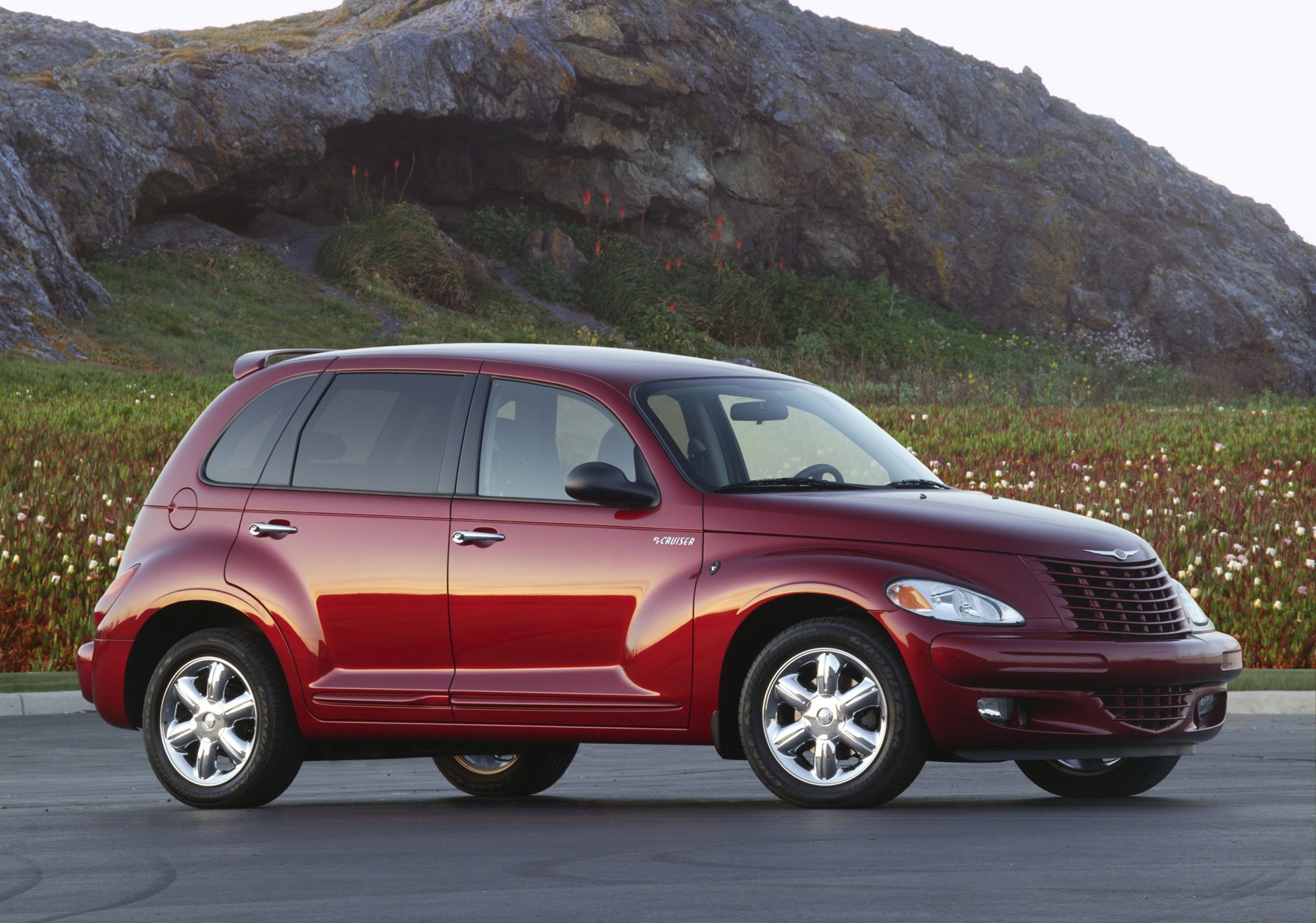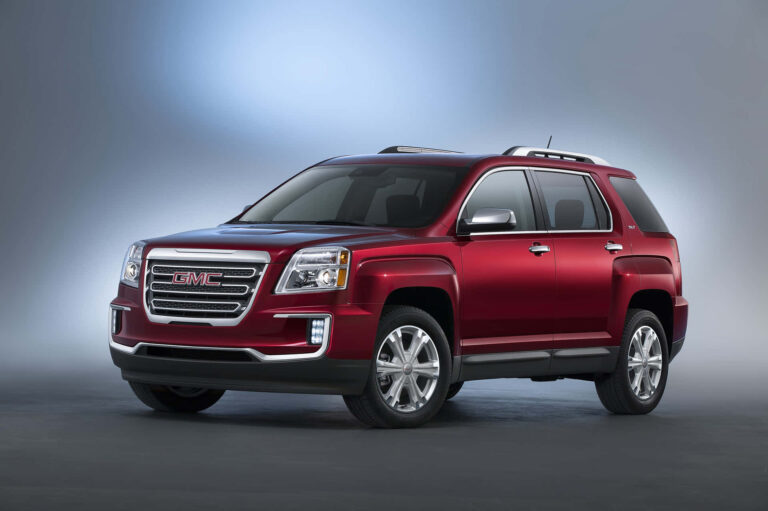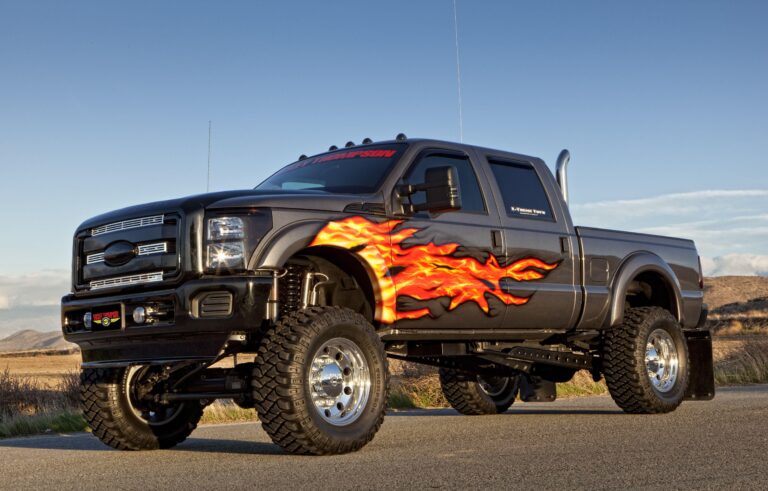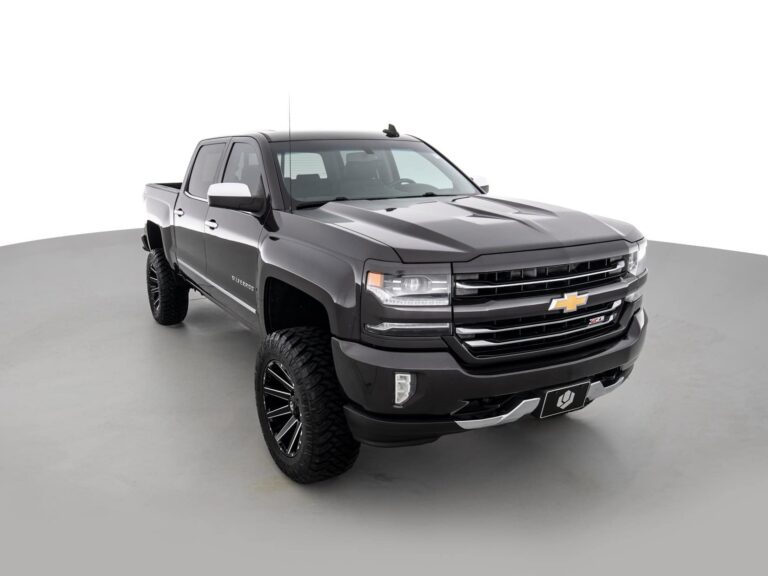Car Brands That Are Easy To Maintain
Car Brands That Are Easy To Maintain cars.truckstrend.com
In the world of automotive ownership, few factors are as critical as a vehicle’s ease of maintenance. It’s a characteristic that goes far beyond the initial purchase price, influencing everything from your annual budget to your peace of mind on the road. An "easy to maintain" car isn’t just one that rarely breaks down; it’s a vehicle for which parts are readily available and affordable, repairs are straightforward, and the overall cost of ownership remains manageable over its lifespan. For many drivers, the dream isn’t just a reliable car, but one that doesn’t become a financial black hole when it needs attention. Understanding which car brands excel in this area can save you significant time, money, and stress in the long run.
What Makes a Car Easy to Maintain?
Car Brands That Are Easy To Maintain
Before diving into specific brands, it’s essential to understand the underlying principles that contribute to a car’s maintainability. Several factors coalesce to define a vehicle as "easy to maintain":
- Reliability: This is paramount. A car that consistently performs without major component failures naturally requires less unscheduled maintenance. Reliability is often a cumulative result of sound engineering, quality materials, and rigorous testing.
- Parts Availability and Cost: Even the most reliable car will eventually need replacement parts. For easy-to-maintain vehicles, parts are widely stocked (both OEM and aftermarket), making them quicker to acquire and typically more affordable. Brands with a large market share often benefit from this.
- Simplicity of Design and Engineering: Complex, highly specialized, or tightly packed engine bays can make routine maintenance and repairs difficult and time-consuming, driving up labor costs. Simpler designs, where components are accessible, contribute significantly to ease of maintenance.
- Widespread Service Network: A brand with a vast network of dealerships and independent mechanics familiar with its vehicles ensures that qualified service is never far away. This reduces tow costs and wait times for repairs.
- DIY-Friendliness: For those who prefer to handle basic tasks themselves, some cars are designed with accessible fluid reservoirs, filters, and bulbs. This empowers owners to perform simple maintenance, further reducing costs.
- Resale Value: While not directly a maintenance factor, cars known for their reliability and low maintenance costs often retain higher resale values, providing a better return on investment when it’s time to sell.

Top Car Brands Known for Easy Maintenance
Certain automotive manufacturers have consistently earned a reputation for producing vehicles that are dependable, cost-effective to repair, and generally hassle-free to own.
Toyota: The Epitome of Reliability
Toyota’s reputation for bulletproof reliability is legendary, and it’s a reputation well-earned. Their vehicles are meticulously engineered for longevity and minimal fuss.

- Key Strengths: Toyota’s strength lies in its conservative, proven engineering. They often stick with well-tested components and technologies rather than rushing to adopt the latest, unproven innovations. This translates into fewer unexpected breakdowns and a long service life.
- Parts & Service: Parts for Toyotas are globally abundant, both from the manufacturer and a vast aftermarket, keeping costs down. Almost any mechanic is familiar with Toyota platforms, making service accessible and affordable.
- Popular Models: The Corolla, Camry, RAV4, and Highlander are prime examples of Toyota’s commitment to durability and low maintenance costs. Even their hybrids, like the Prius, are remarkably reliable and efficient.

Honda: Engineering for Efficiency and Durability
Honda stands shoulder-to-shoulder with Toyota in the reliability stakes, offering vehicles known for their efficient engines, solid build quality, and enjoyable driving dynamics.
- Key Strengths: Honda’s VTEC engines are known for their efficiency and robustness. Like Toyota, Honda prioritizes proven technology and robust construction, leading to low incidence of major mechanical failures. Their vehicles are often designed with a practical layout, making routine service straightforward.
- Parts & Service: Honda parts are widely available and reasonably priced. Their extensive dealer network and popularity among independent mechanics ensure that finding qualified service is rarely an issue.
- Popular Models: The Civic, Accord, CR-V, and Pilot are celebrated for their long-term reliability and relatively low running costs.
Subaru: Rugged Reliability, Especially for AWD
While perhaps not as globally ubiquitous as Toyota or Honda, Subaru has carved out a niche for itself with its standard symmetrical all-wheel-drive systems and impressive longevity, particularly in harsher climates.
- Key Strengths: Subaru vehicles are built with robust components designed to withstand varied terrains and weather conditions. Their boxer engines, while unique, are generally reliable, and the brand has made significant strides in recent years to improve overall quality and address past minor issues.
- Parts & Service: Parts availability is generally good, though perhaps not as widespread as Toyota or Honda. However, mechanics familiar with Subarus are common, especially in regions where they are popular.
- Popular Models: The Forester, Outback, and Crosstrek are well-regarded for their durability, safety, and relatively low long-term maintenance.
Mazda: Quality and Driving Pleasure Meeting Reliability
In recent years, Mazda has significantly elevated its game in terms of reliability and build quality, moving beyond its previous reputation to offer genuinely dependable vehicles with a premium feel.
- Key Strengths: Mazda’s Skyactiv technology focuses on optimizing internal combustion engines for efficiency and reliability, rather than relying heavily on complex turbocharging or hybrid systems across their entire lineup. Their vehicles offer a refined driving experience without sacrificing durability.
- Parts & Service: Parts are readily available, and as Mazda’s market share grows, so does the familiarity of mechanics with their platforms.
- Popular Models: The Mazda3, Mazda CX-5, and Mazda6 are consistently rated highly for reliability and owner satisfaction, proving that engaging driving dynamics don’t have to come at the cost of high maintenance.
Hyundai & Kia: Rapid Ascent in Quality and Value
Once seen as budget-friendly alternatives, Hyundai and Kia (part of the same automotive group) have made monumental leaps in quality, reliability, and technology over the last decade. They now stand as strong contenders in the easy-to-maintain category.
- Key Strengths: A major draw is their industry-leading warranties, which underscore their confidence in product quality. They offer excellent value for money upfront and have significantly improved the durability of their powertrains and electronics.
- Parts & Service: With their growing market presence, parts availability is excellent, and their service networks are robust. Competitive pricing for parts and labor is also a significant advantage.
- Popular Models: The Elantra, Sonata, Tucson, Sportage, and Sorento are all examples of vehicles that offer modern features, good reliability, and reasonable maintenance costs.
Beyond the Brand: Key Considerations for Easy Maintenance
While choosing a reliable brand is a great starting point, smart car ownership involves more than just the badge on the hood.
- Model-Specific Reliability: Even within a highly reliable brand, certain models or specific model years might have known issues. Always research the reliability of the exact model and year you’re considering using resources like Consumer Reports, J.D. Power, and real-world owner forums.
- Adherence to Maintenance Schedule: This is perhaps the most critical factor. Regardless of how reliable your car is, skipping oil changes, fluid checks, or recommended service intervals will inevitably lead to problems and higher costs down the line. The owner’s manual is your bible.
- Driving Habits: Aggressive driving, frequent hard braking, rapid acceleration, and excessive idling put more strain on a vehicle’s components, leading to premature wear and tear. Smooth, consistent driving extends component life.
- Environmental Factors: Cars driven in extreme hot or cold climates, or on rough roads, will naturally require more frequent checks and maintenance than those driven in temperate conditions on smooth highways.
- New vs. Used Vehicles: A new car comes with a warranty and a clean slate, but depreciation is highest initially. A used car can be a great value, but its past maintenance history is crucial. Always get a pre-purchase inspection from a trusted mechanic for used vehicles.
- DIY Potential: If you’re mechanically inclined, consider models where basic maintenance tasks (oil changes, filter replacements, spark plug changes) are relatively straightforward. This can save significant labor costs.
Tips for Reducing Car Maintenance Costs
Even with an easy-to-maintain car, there are strategies to keep costs down:
- Read Your Owner’s Manual: It outlines the precise maintenance schedule and specifications for your vehicle. Stick to it religiously.
- Don’t Ignore Warning Lights: A check engine light or a low tire pressure warning is your car trying to tell you something. Address these issues promptly before they escalate into major, expensive problems.
- Find a Trusted Mechanic: A good, honest mechanic is invaluable. Get recommendations, read reviews, and build a relationship with a shop you trust.
- Compare Parts Prices: For non-warranty repairs, research parts costs. Sometimes OEM parts are best, but quality aftermarket parts can offer significant savings.
- Learn Basic DIY: Knowing how to check fluid levels, tire pressure, and replace cabin or engine air filters can save you money and keep your car running optimally.
- Shop Around for Insurance: Maintenance costs are one thing, but don’t forget insurance. Regularly compare quotes to ensure you’re getting the best rate.
Potential Challenges and Solutions
Even with an "easy-to-maintain" vehicle, challenges can arise.
- Aging Vehicles: Even the most reliable car will eventually age. Components wear out, rubber perishes, and electronics can fail.
- Solution: Budget for increased maintenance as your car ages. Proactive replacement of wear items (belts, hoses) can prevent breakdowns. At a certain point, the cost of ongoing repairs may outweigh the value of the vehicle, signaling it’s time to consider replacement.
- Specialized Components: While generally simpler, some models within these brands might feature more complex systems (e.g., specific turbochargers, advanced hybrid components).
- Solution: Research the specific powertrain and technology of the model you’re considering. Understand if it has any known costly components or specialized service requirements.
- Regional Differences in Service Cost: Labor rates for mechanics can vary significantly by region.
- Solution: Get quotes from multiple shops for major repairs. Factor in your local cost of living when estimating overall maintenance expenses.
Comparative Analysis: Key Maintenance Factors for Top Brands
This table provides a general overview based on common perceptions and industry data. Individual model years and specific vehicles may vary.
| Brand | General Reliability Rating | Parts Availability | Cost of Common Repairs | DIY Friendliness | Service Network |
|---|---|---|---|---|---|
| Toyota | Excellent | Excellent | Low | High | Excellent |
| Honda | Excellent | Excellent | Low | High | Excellent |
| Subaru | Very Good | Good | Moderate | Moderate | Very Good |
| Mazda | Very Good | Very Good | Low to Moderate | Moderate | Very Good |
| Hyundai/Kia | Good to Very Good | Very Good | Low to Moderate | Moderate | Very Good |
Note: "Cost of Common Repairs" refers to typical repairs like brake jobs, fluid flushes, minor electrical issues, not major engine or transmission overhauls.
Frequently Asked Questions (FAQ)
Q1: Are luxury cars expensive to maintain?
A1: Generally, yes. Luxury brands often use specialized parts, complex electronic systems, and require specific diagnostic tools, leading to higher labor costs and more expensive parts. Even for reliable luxury brands, routine service can be significantly more expensive than for mainstream vehicles.
Q2: Does hybrid technology make cars harder to maintain?
A2: Not necessarily. Modern hybrids, especially those from brands like Toyota and Honda, have proven to be exceptionally reliable. While the hybrid battery pack is a long-term consideration, it often comes with a long warranty, and other components like brakes may even last longer due to regenerative braking.
Q3: How much should I budget for car maintenance annually?
A3: This varies greatly by vehicle age, mileage, and brand. A general rule of thumb is to budget $500-$1,000 per year for a newer, reliable car, increasing to $1,000-$2,000+ for older vehicles or those with known issues. This should cover routine maintenance and a contingency for unexpected repairs.
Q4: Is it cheaper to buy a new car or maintain an old one?
A4: This is a complex question. While a new car has higher upfront costs (depreciation being the biggest), it typically has lower maintenance costs for the first few years. An old car has little to no depreciation, but repair costs can escalate. The "tipping point" depends on the old car’s condition, the cost of repairs, and your personal finances.
Q5: What’s the most important thing for car longevity?
A5: Adherence to the manufacturer’s recommended maintenance schedule. Regular oil changes, fluid checks, filter replacements, and addressing minor issues promptly are far more crucial than any specific brand choice. Proactive maintenance is key to a long and healthy car life.
Conclusion
Choosing a car that is easy to maintain is a savvy financial decision that pays dividends throughout your ownership experience. Brands like Toyota, Honda, Subaru, Mazda, Hyundai, and Kia have consistently demonstrated their commitment to reliability, affordability of parts, and straightforward serviceability. However, the brand is just one piece of the puzzle. Diligent adherence to maintenance schedules, informed driving habits, and proactive attention to your vehicle’s needs are equally vital. By combining a wise brand choice with responsible ownership practices, you can enjoy years of trouble-free driving, keeping your maintenance costs manageable and your peace of mind intact. In the end, an easy-to-maintain car isn’t just about saving money; it’s about maximizing your time on the road and minimizing your time in the repair shop.




